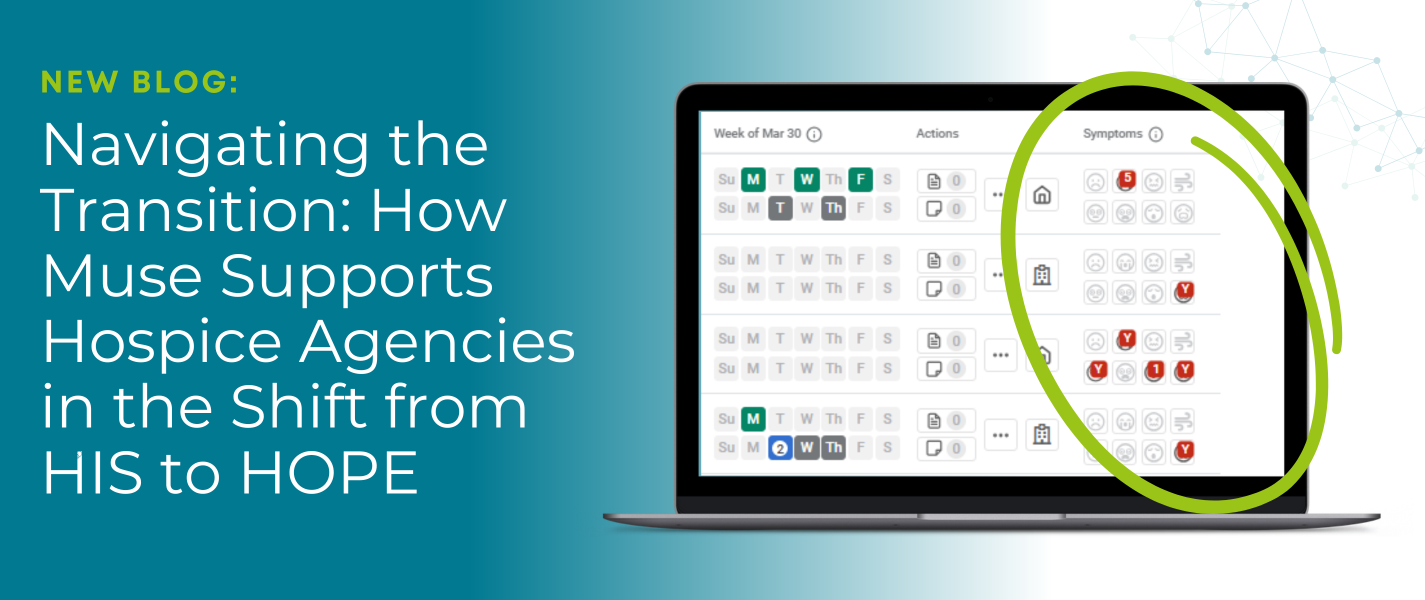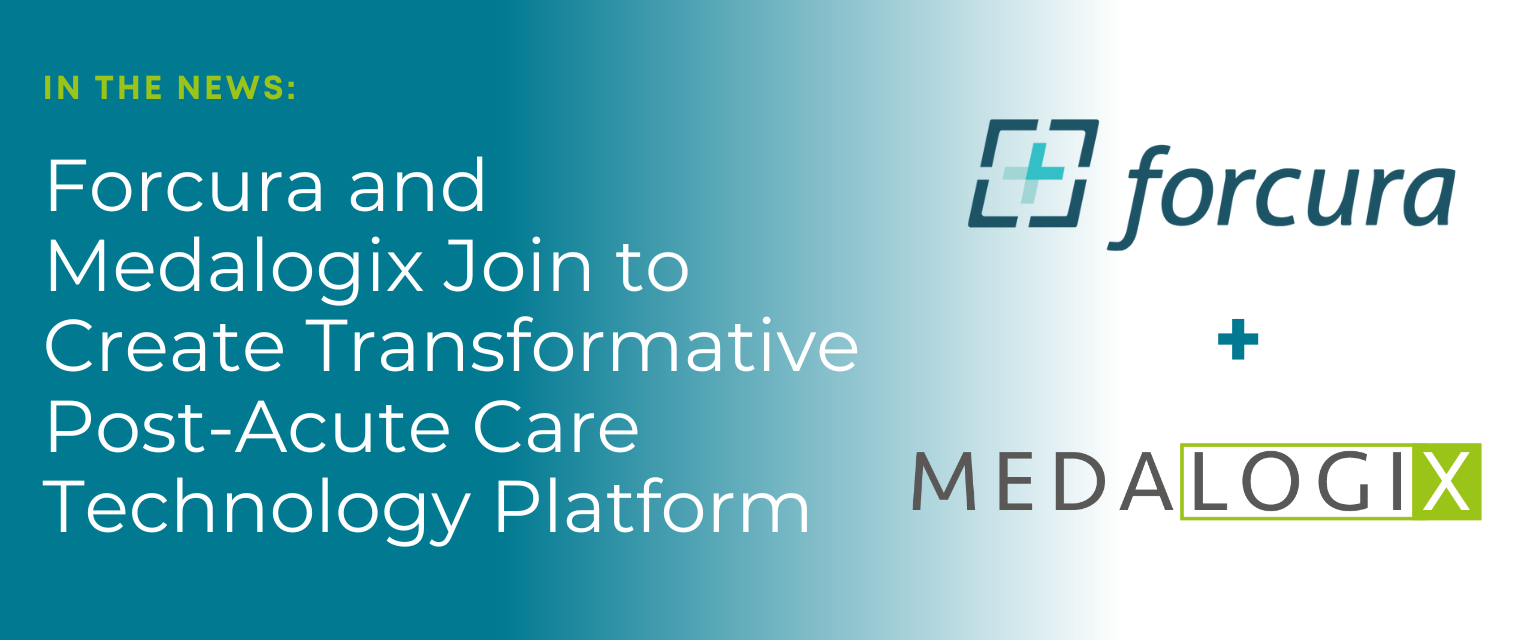High-quality, accessible data essential to strong home health practices and outcomes
When it comes to providing quality home health care, agencies are only as good as the data they’re able to leverage. Good data has a proactive value throughout every patient episode, making strong documentation practices a must from the very start of care. Contradictions can be introduced as early as the intake and admission process, for example when assessments and OASIS don’t align with provided referral data or reflect that patient’s needs.
There are two core elements to consider about the importance of data in home health: data quality and data accessibility. First, are patient data and documentation complete and accurate? Second, are key insights from clinical data easily accessible and usable for care decisions, coding, and other needs? Even the most meticulously kept patient records aren’t useful if care teams can’t act on the data they contain.
Data and documentation integrity impacts the entire home health landscape and is essential to patients, providers, and agencies alike. Data deficiencies and problems with ease of access and usability have major impacts:
Care Planning and Provision
The most important reason to care about good data is stronger patient care. Plan of care development doesn’t happen in a vacuum. Clinicians and other home health professionals plan how they spend their time and the kind of care they provide based on their understanding of a patient’s condition, both in a particular moment and their trajectory over time. This understanding comes from review of patient documentation – notes, labs, assessments, and more.
Accurate documentation and complete data, when activated properly, ensure that visit frequency and care provided align with the patient’s condition. Conversely, missing or buried patient data can lead to care plans that aren’t fully reflective of a patient’s true needs. Particularly in patients with higher acuity, even small misses can lead to adverse care outcomes that didn’t need to happen.
Coding and Reimbursement
Much as clinicians refer to previously recorded clinical data as they plan and provide care, coding teams reference clinical documentation in their work. They use it to make decisions on the appropriateness of a set of codes based on clinical evidence. If the underlying data supporting coding decisions is deficient, coding will be as well. Coding outputs are only as good as the supporting data coming in. Coders may have the option to query clinicians for clarity, but quality documentation can cut down on unneeded query volume.
Because coding is the basis for billing and reimbursement, coding deficiencies result in inaccurate reimbursements to agencies. While some overcoding happens, agencies almost always have a net undercoding issue, which means they won’t receive full compensation for the level of care they provide.
Quality Measures
Complete and accurate patient documentation is essential to strong agency performance in key quality measures, which generally reflect the outcomes patients experience in relation to their condition. A net underrepresentation of patient acuity means outcomes appear worse relative to documented conditions. Basically, agencies seem to be providing lower-quality care. Accuracy in patient documentation ensures that acuity is fully captured, and outcomes are judged against the correct standard.
One example is CMS Star Ratings, which account for a number of elements including prevention of harm and avoidable hospitalizations, improvements experienced by the patient, and utilization. CMS is only able to accurately evaluate against these standards when agencies consistently provide them with good data.
Reporting Compliance
Given the challenges inherent in manual review of the patient record, agencies can struggle with timely submission of required CMS documentation like Notices of Admission (NoA). These must be received by an agency’s Medicare Administrative Contractor (MAC) within 5 days of admission, and ideally within 24-48 hours.
Exceptions to this requirement are only made for circumstances beyond an agency’s control, which don’t include imperfect internal review practices. For every day a NoA is late, payment is reduced, and this can impact more than the first episode if the delay is severe. Agencies can more consistently and easily meet these deadlines and avoid penalties when the data they work with is complete and accurate from the beginning.
Maintaining consistent accuracy and completeness is a significant challenge.
Even the best agencies can’t catch every relevant data point about every patient without help. The problem begins with documentation volume: even if everything care providers need is in the record somewhere, whether key insights are easily identifiable and actionable on is another question entirely. From the very start of the home health patient journey, patients can have lengthy histories with correspondingly lengthy and complex records. Poring over these records for key data is difficult. When changes occur during an episode, identifying a major shift in risk or trajectory can also be challenging.
Voluminous documentation is itself a steep hill to climb, but data accuracy issues become tougher still when we consider industry-wide staffing shortages. Agencies can only throw so many bodies at the problem, because hiring and retention remain difficult. Some may turn to outsourced reviewers, but this solution doesn’t address the inherent limitation of manual review: humans miss things. Home health agencies are most successful with an intentional leveraging of both trained professionals and technology.
The right technology focuses on the problem – not its symptoms.
Agencies and care teams are best equipped to consistently maintain and act on solid patient data through applied use of the right technology. There are countless software options out there, but not all are equal to the task. Many only address the consequences of data deficiencies rather than targeting the core issue itself. One example is coding software, which can be a valuable tool to make the coding process more efficient but doesn’t do anything to remedy problems with the data referenced in coding decisions. Instead, a key part of any successful agency’s toolbox should be a platform that evaluates the full body of clinical evidence to surface opportunities for documentation improvement.
Recognizing the importance of solving the real problem facing home health agencies, Medalogix is proud to offer Pulse Referrals & Admissions. This essential solution applies machine learning AI to condense lengthy referral records into a single-page, cross-linked clinical summary for review. It then autonomously cross-references referral documents, the OASIS assessment, and clinical notes in search of mismatches, providing intelligent insights to ensure data integrity.
Referrals & Admissions lets agencies build on a foundation of consistently complete and accurate documentation. In turn, this helps clinicians make better care decisions, coders reference better data, and agencies receive more accurate evaluations on quality while more easily meeting CMS reporting requirements.
To learn more about Pulse Referrals & Admissions, and to see a live demo of how Medalogix can help your agency, visit us here.
Related Blogs

Navigating the Transition: How Medalogix Muse Supports Hospice Agencies in the Shift from HIS to HOPE
Authored by: Steven Shelton, MBA, MSN, RN, CHPN; Senior Director, Clinic...

Forcura and Medalogix Join to Create Transformative Post-Acute Care Technology Platform
Berkshire Partners Will Serve as Lead Investor in the New Platform, with...

HHVBP: A Winning Strategy for Home Health Providers
The start of 2025 has ushered in a wave of new realities for Home Health...


